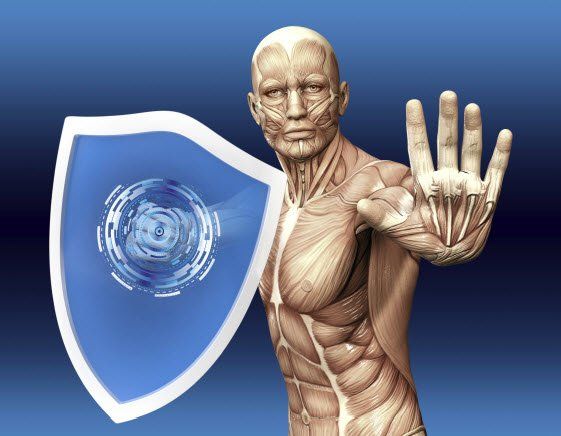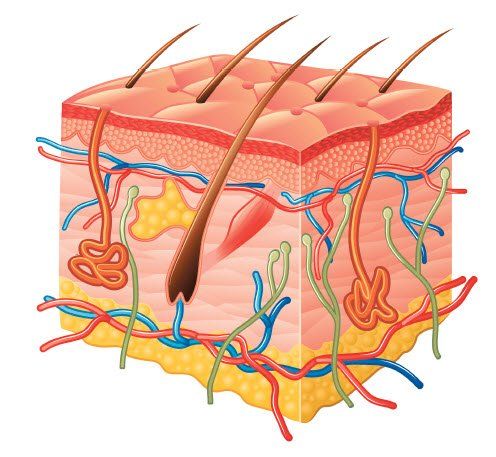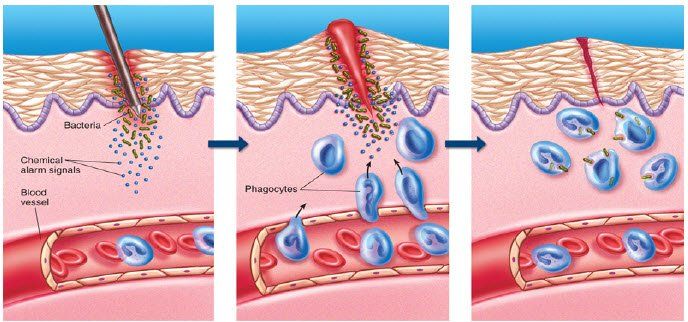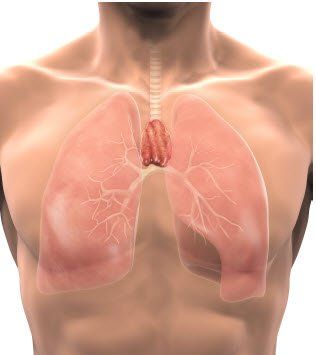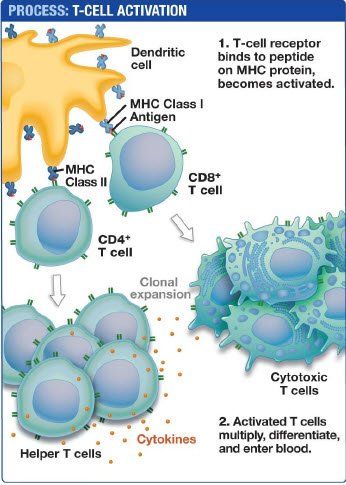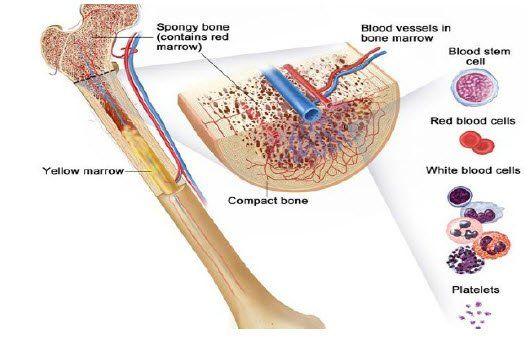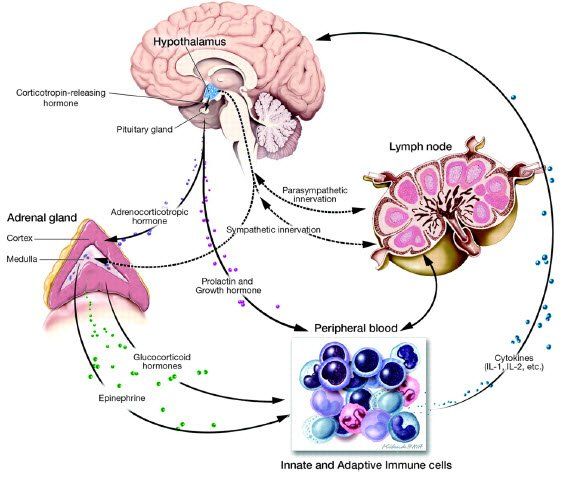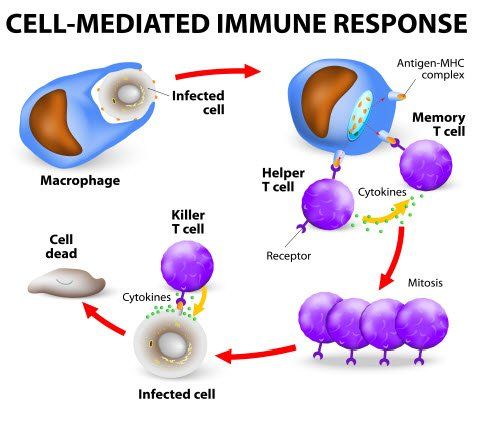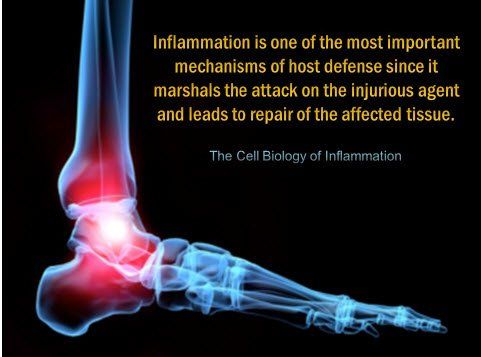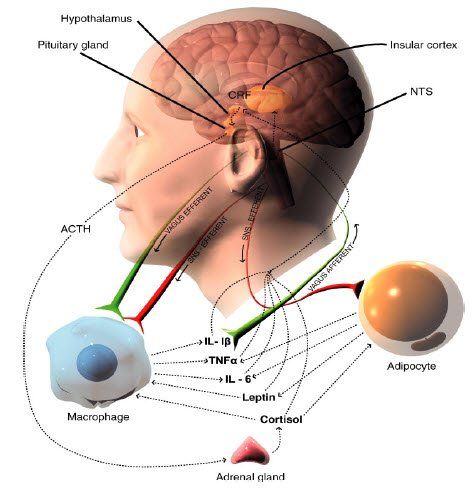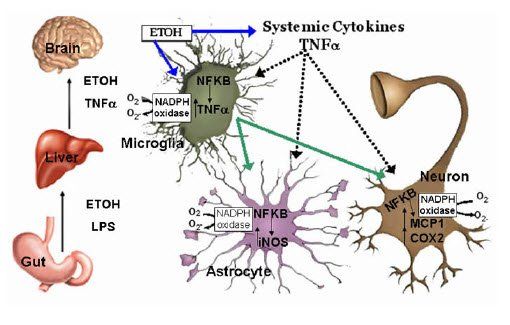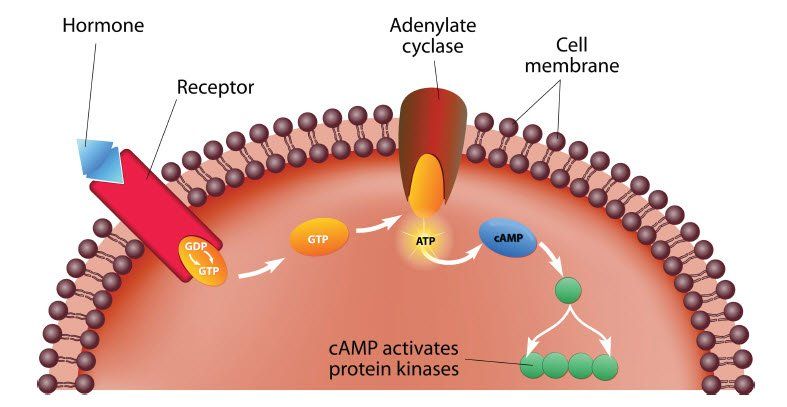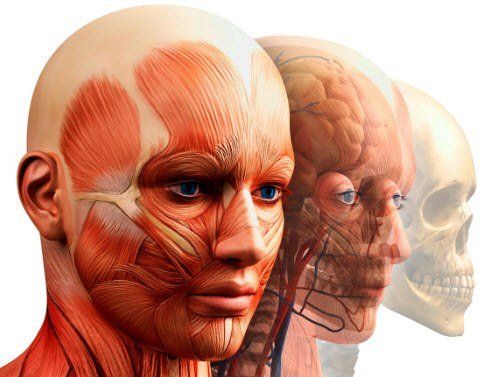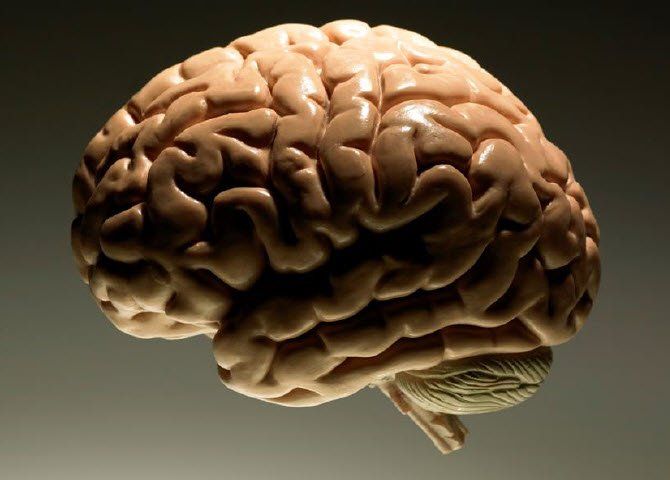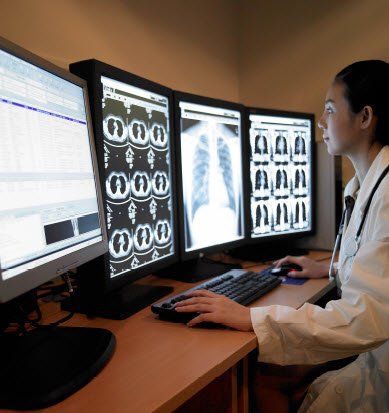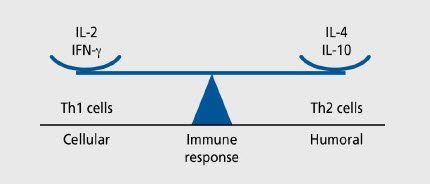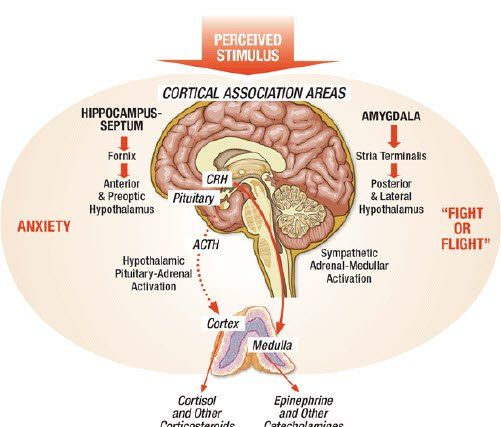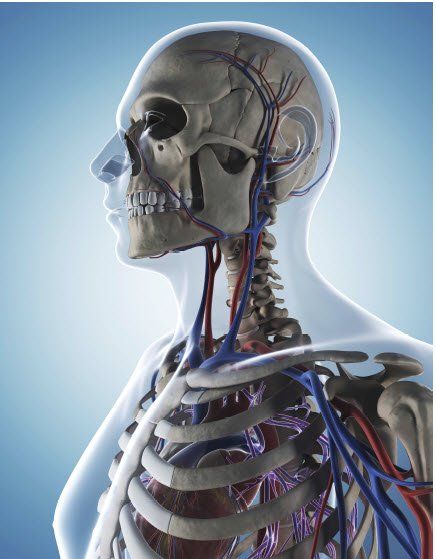The past 20 years of health science and research has seen a tremendous increase in the knowledge and understanding of the human immune system, mostly due to cancer and AIDS research. The findings have completely changed our approach to health care as we slowly change from a disease/symptom model to one in which the function and communication of the immune system is optimized.
Nervous System Control Of The Immune System
July 7, 2019
A NEW APPROACH TO IMMUNITY
"The inability of antibiotics to wipe out disease entirely and the emergence of antibiotic resistant bacteria and super infections have led many distinguished researchers and physicians to conclude that the answer to disease is not to create stronger medicines. Rather, we say the solution lies in attacking the disease from the inside out by strengthening the body's natural defense network.”
Dr. Robert Roundtree, Immunotics
IMMUNE SYSTEM FUNDAMENTALS
Components of the specific system are broken down into 2 categories, humoral and cell mediated.
Humoral: are the B cells, which differentiate into plasma cells, which then produce antibodies. B cells require the assistance of macrophages, T cells, and sometimes complement in order to destroy foreign antigens.
Cell Mediated: does not involve antibodies but rather involves the production of specific T lymphocytes or T cells. Cell mediated is directed primarily against antigens embedded in the membrane of cells. It is most effective in removing virus-infected cells, but it also assists B cells in defending against fungi, intracellular bacteria and protozoan.
Cellular immunity protects the body by causing activation of antigen-specific cytotoxic T cells which destroy body cells displaying epitopes of foreign antigen on their surface; and by stimulating cells to secrete a variety of cytokines which influence the function of other cells involved in the immune and inflammatory process.
When tissue injury occurs, whether caused by bacteria, trauma, chemicals or heat, multiple substances, such as bradykinin, histamine, prostaglandins and seratonin are released which allow the central nervous system to control and cordinate the healing and repair of the affected tissue.
This process is called inflammation and it strongly activates the macrophages system to begin to remove the damaged tissue and antigens. Inflammation is a vital part of the healing process and when it is delayed or inhibited, healing is incomplete.
Thymus and T cell function
Although the thymus has historically been thought to only serve a purpose early in life, a growing body of research is clearly demonstrating that the thymus serves many purposes throughout life.
Nature
Have we underestimated the importance of the thymus in humans?
Recent immunological research has concentrated on the complex and subtle interactions between T cells, B cells and accessory cells. In these studies, little attention has been given to the adult thymus gland.
“Yet few people take a parallel view of the thymus except perhaps those investigating aging and thymic hormones, in both of these areas of research it is obvious that the thymus must be active throughout life for continued health.”
National Library of Medicine
"It has been estimated that complete thymic atrophy would not occur until the age of 120 years and there is evidence to suggest that even in the very old, sufficient thymic function may be retained to allow for native T cell differentiation."
Frontiers in Bioscience
Research has discovered that the thymus gland produces a variety of hormones. Since 1990, several different peptide hormones naturally secreted by the thymus gland have been discovered and clinically tested. These include the Thymosins, a group of 40 related peptides, Thymopotein and Thymulin. Collectively, these thymus gland hormones have been shown to have a broad range of action, well beyond maturing and differentiating T cells, including:
- increasing key immune signals called lymphokines or cytokines.
- causing greater number of T cells to develop IL-2 receptors more rapidly.
- increasing rapid white blood cell proliferation and activation.
- preventing tissue wasting that occurs with thymus gland atrophy.
- reduces and controls autoimmune reactions.
- preventing bone marrow injury and blood cells reduction following cancer treatments.
- increasing disease fighting antibodies, yet reducing the level of "allergic antibodies".
Central Nervous System & Immune System
Neuro-endocrino-immunology is a point of intersection in the field of immunology. It is also referred to in scientific literature as psychoneuroimmunology. The emerging concept is that the cells of the immune system and inflammatory systems communicate directly with the peripheral and or central nervous system.
The nervous system affects the immune system both directly and indirectly. The direct effect is via the synapsing of neurons with white blood cells in lymphoid tissues, while the indirect effect is through blood-borne neurotransmitters and hormones, which activate receptors on the white blood cells surface.
“Vertebrates achieve internal homeostasis during infection or injury by balancing the activities of pro-inflammatory and anti-inflammatory pathways. Endotoxins, produced by all gram negative bacteria, activate macrophages to release cytokines that are potentially lethal. The central nervous system regulates systemic inflammatory responses to endotoxin through humoral mechanisms. Activation of afferent vagus nerve fibers by endotoxins or cytokines stimulates hypothalamic-pituitary-adrenal axis responses.”
Nature
CNS REGULATION OF T CELL ACTIVITY
Anatomically, all of the lymphoid organs are innervated and there is a regular pattern of close spatial relationships between nerve fibers and T lymphocytes, mast cells and macrophages.
"Collectively, the available data indicates that a complex network of interactions between neurons and T cells is involved in determining the balance between Th1 and Th2 regulating signals, which affects the outcome of the immune response."
IMMUNOLOGY TODAY
Basic studies shed light on immune function
OSU- Immunology Research Dept.
CYTOKINES: chemical messengers
Cytokines, also known as lymphokines, are low-molecular weight proteins that are involved in communication between cells. Their purpose is to induce or regulate various immune or inflammatory responses. Immune system disorders may occur if cytokine production or regulation is impaired.
Guyton's Anatomy and Physiology
Cytokines as bridges that connect the brain and the immune system.
“On the basis of our present knowledge, it can be proposed that at least three main pathways exist connecting the brain and the immune system: humoral, neural, and endocrine. Cytokines, soluble transmitters, once considered specific to the immune system, do act and can be produced by the central nervous system and represents a common chemical language between the two systems.”
Institute of Molecular Biology
MECHANISM OF HORMONE ACTION
"No one could survive without precise signaling in cells. The body functions properly only because the cells constantly communicate with each other."
Scientific American
Researchers Find Textbook-Altering Link Between Brain, Immune System
In a stunning discovery that overturns decades of text book teaching, researchers at the University of Virginia School of Medicine have determined that the brain is directly connected to the immune system by vessels previously thought not to exist.
That such vessels could have escaped detection when the lymphatic system has been so thoroughly mapped through out the body is surprising on its own, but the true significance of the discovery lies in the effects it could have on the study and treatment of neurological diseases ranging from autism to Alzheimer’s disease to multiple sclerosis.
IMMUNE SYSTEM DYSFUNCTION
There are some sixty-five million Americans who suffer from a dysfunctioning immune system and the number is growing at a rapid rate.
The cause of autoimmune and immunodeficiency disease has yet to be completely understood, and it is likely that a variety of factors are involved. But a growing number of researchers, including the 1999 Nobel Prize winner in medicine, Dr. Gunter Blobel, are looking at a breakdown in the cell to cell communication of the immune and nervous system to be a leading contributor of immune system dysfunction.
Alteration in cell death pathway sheds light on autoimmune disease.
A cells ability to commit suicide, a process scientists call "apoptosis", is an important feature that the body uses to prevent overgrowth of cells and to get rid of cells that it no longer needs .The National Institute of Allergy and Infectious Disease (NIAID) researchers describe a mutation in immune system cells in patients with autoimmune lymphoproliferative syndrome or ALPS, that interferes with cell death. In ALPS patients, immune cells do not die; instead they remain activated, proliferate continuously, and attack the body resulting in uncontrolled cell growth. Abnormalities in the communication of these interacting cells lead to dysregulation of the immune response.
National Institute of Health
As Th1 and Th2 cytokines can inhibit the secretion of the opposite type of cytokines, the changes in this sensitive Th1/Th2 balance is thought to be critical in the pathogenesis of several immunological disorders. Th1 dominance has been described in several organ specific autoimmune diseases including diabetes, rheumatoid arthritis, and Crohns disease.
"There is now abundant evidence to show that clinical disease including autoimmune disease, infectious disease and allergic disorders are due to abnormal communication and signaling pathways in the human body.”
Harvard School of Public Health
Immune Dysfunction and Stress
Conclusion
At all biological levels (molecular, cellular, organ), communication between elements is essential for the proper functioning of system. This communication process is essential to the homeostasis of the body. The foundation of health begins with a properly function nervous system to the extent that we can equate levels of function and healing capability with the ability of the nervous system to send and receive information. The trend in immunological research clearly demonstrates that restoring, balancing, facilitating and maximizing the communication systems of the body is the key to optimal health and immune function.
Recent Articles

Now that you know the top tips for finding a great chiropractor in St Petersburg FL, it's time to book an appointment. Here at Unified Chiropractic, we want to help you live a pain-free life.
If you're local to the Northeast Saint Pete area, you're more than welcome to come in to meet us face-to-face. We'd love to discuss your healthcare goals with you!
Blogs and Articles

Now that you know the top tips for finding a great chiropractor in St Petersburg FL, it's time to book an appointment. Here at Unified Chiropractic, we want to help you live a pain-free life.
If you're local to the Northeast Saint Pete area, you're more than welcome to come in to meet us face-to-face. We'd love to discuss your healthcare goals with you!


